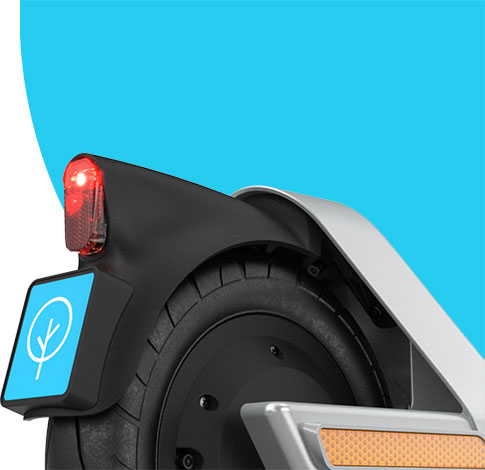In September of 2017, the first Bird was ridden in Santa Monica, California – marking the creation of the shared e-scooter industry, and Bird’s mission to make cities more livable by reducing car usage, traffic, and carbon emissions.
E-scooters have since provided an alternative transport option, connected people to transit, and made it easier for everyone to move about their cities. And as with any new transportation options, e-scooters have also brought forth important questions about how these new, sustainable options can best integrate into cities and streets, largely built for cars.
A key element of these conversations is where and how people are parking e-scooters. While nearly ten Birds can fit in a single car parking space, there is continued work to be done to carve out space for e-scooters in our cities, shape new societal norms, and build out the tools to help manage the public right of way. Bird has partnered with several cities to address these parking challenges in impactful ways that benefit both riders and residents.
Capital of Silicon Valley Tackles Parking
In the spring of 2018, Bird launched in San Jose, California — Northern California’s most populous city. The city is booming, and in recent years has seen a sharp increase in residents, companies, students, but also roadway congestion. Today, San Jose is one of the top five most congested cities in the nation.
Bird teamed with the city of San Jose to help bring residents to the downtown area and other neighborhoods without the dependence of a car. After a few months of reducing short car trips throughout the city, we came away with a handful of important learnings to share with others.
Key Learnings
To better understand how people were parking e-scooters in San Jose, researchers at San Jose State University’s Mineta Transportation Institute (MTI) took to the streets. MTI researched the potential risk e-scooters could pose to others on streets, sidewalks, and public spaces. MTI conducted its study by observing and photographing more than 500 parked shared e-scooters in downtown San Jose over a two month period. They categorized these photographs based on key attributes, including where and how e-scooters were parked, and whether they impeded pedestrian flow.
The Data
After examining and coding 500+ photographs of parked shared e-scooters, clear patterns emerged.
Fewer than 1% of e-scooters were parked in the vehicular right of way.
Of the e-scooters parked on sidewalks, 90% did not overtly disrupt pedestrian traffic. Among the remaining 10% of sidewalk-parked e-scooters, the vast majority did not impede pedestrian traffic. Only 11 out of 500 scooters were observed blocking pedestrian travel in any way.
Virtually all e-scooters (97%) were parked upright, as required by California state law.
Applying the Key Learnings
Just a few months into the introduction of e-scooters in San Jose, MTI’s findings provide an encouraging sign about how this new, city-friendly mode can fit into existing streetscapes — and inform how we adapt to them over time. Bird is committed to ensuring that our devices are correctly parked, and is developing features and practices that can help achieve this goal:
- Bird Parking Spaces. Bird has worked with multiple cities, particularly those with congested downtown streets, to identify locations and signage for designated scooter parking to improve orderliness and reduce clutter. These designated parking areas help drive riders to specified locations within the city.
- Community Mode is an in-app reporting feature that allows anyone – whether or not they ride Bird – to report instances where a Bird is parked improperly. These reports help us take appropriate action such as deploying in-market employees to reposition or remove a vehicle, or taking further disciplinary action as needed.
- Bird Watchers are members of the community who monitor the Bird fleet daily and rebalance vehicles as needed. This team of individuals moves poorly parked Birds to make sure the fleet looks tidy and is parked appropriately.
- End of Ride Photo: Prior to ending a ride, riders are prompted to take a photo of their parked Bird to verify proper parking. This reminds individuals that they are prohibited from blocking the right of way, and allows us to follow up with riders for further education. Repeat offenders can have their accounts suspended and, in some cases, terminated.
Bird is committed to helping make cities more livable – which includes keeping our streets safe, and sidewalks clear. These tools are the first step in our journey of providing solutions to e-scooter parking, and we look forward to continuing to serve cities while providing an inclusive and sustainable transportation option for people.
– The Bird Public Affairs Team

